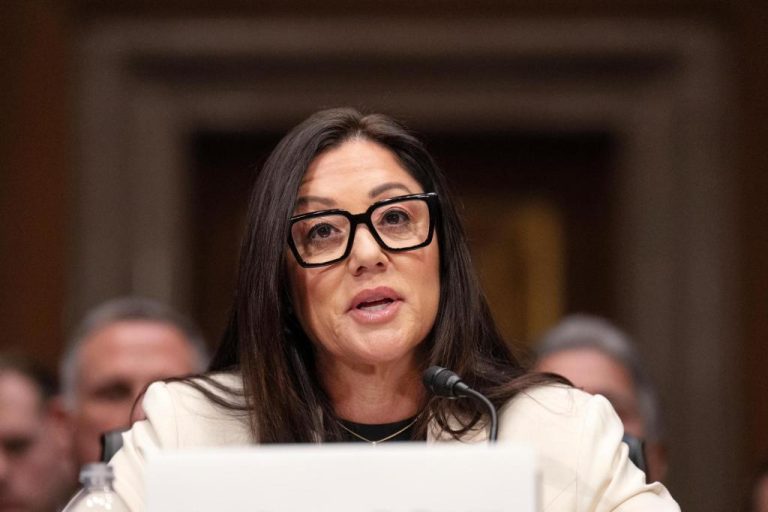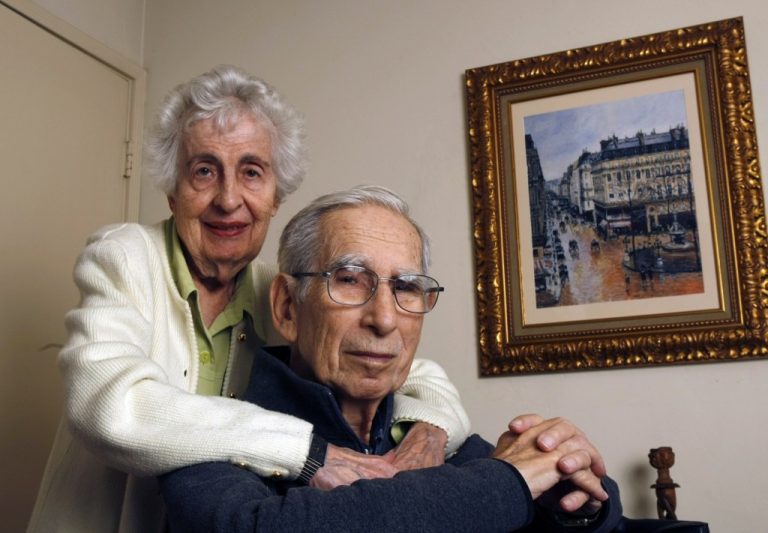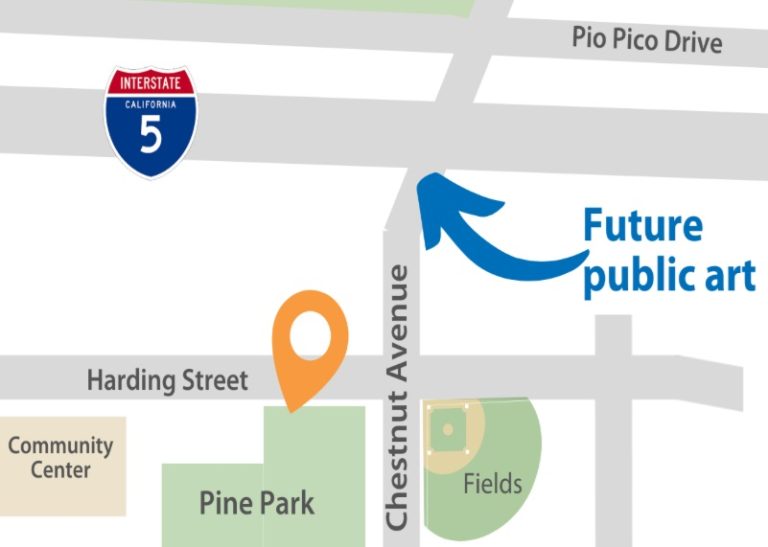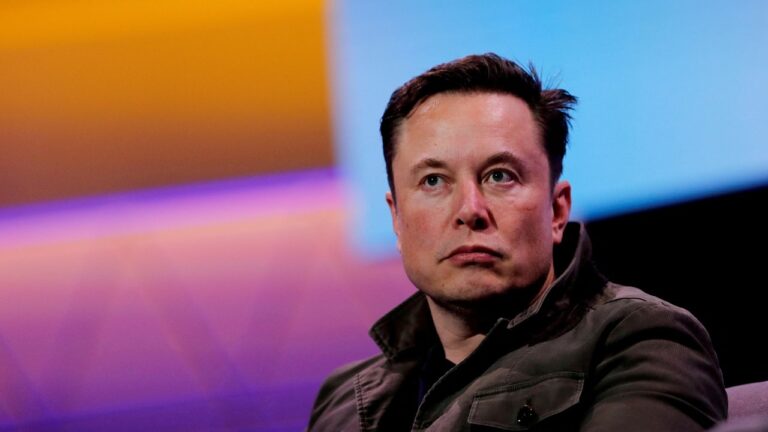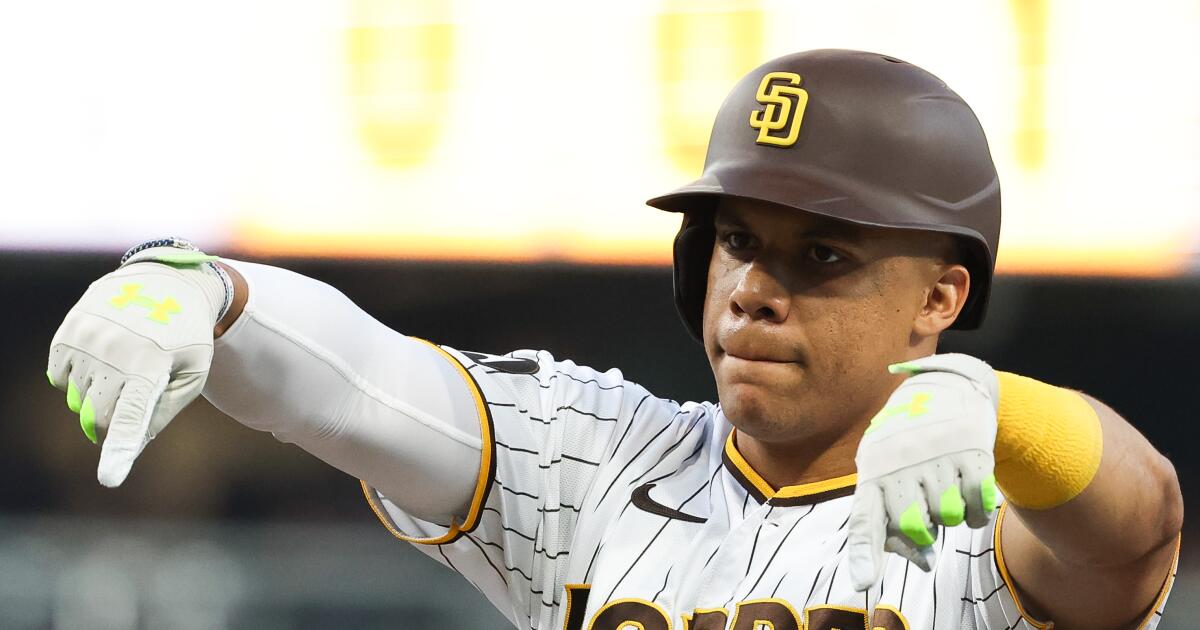
The Padres let Nick Martinez go over what essentially was $3 million per year when compared to the deal he agreed to with the Reds. They let Michael Wacha go over concerns regarding his shoulder. They had no choice but to watch Seth Lugo go after he declined an option. And they had almost no choice but to let Blake Snell go after he won a second Cy Young award in the final year of his contract.
So there has to be a plan. Right? A.J. Preller always has a plan.
“That’s one thing you can be sure about,” a rival executive said. “He is going to make moves.”
The Padres’ plan going into the winter meetings in Nashville, Tenn., is to keep talking about acquiring starting pitchers.
And, oh yes, they might trade Juan Soto by the time they depart the Opryland Resort on Thursday.
Perhaps closer to an “if” at the start of the offseason, the Padres moving Soto is now widely seen as a “when.” What was “listening” is now “talking.”
The Padres don’t want to trade one of the most accomplished 25-year-old hitters in MLB history. They pretty much have to.
The team’s estimated projected payroll commitments (including Soto) stand at almost $190 million. While no hard number has been made public, multiple sources say the Padres expect to have a payroll around $200 million in 2024.
They are not getting three (or four) starting pitchers with $10 million.
And since jettisoning Soto in no way signals a planned teardown — they will still have three-quarters of the so-called Big Four and two frontline starting pitchers, who are due a combined $90 million in ‘24 and all have no-trade clauses — the Padres are seeking to bolster their rotation with quality arms. Further, they need a second catcher, are looking for bullpen depth, will have to replace Soto in left field and likely have to replace center fielder Trent Grisham either because he is traded or released.

Padres left fielder Juan Soto (22) reacts after flying out with the bases loaded on Aug. 19.
(Meg McLaughlin/The San Diego Union-Tribune)
That will be a more manageable task if Soto is moved. Doing so would free up an additional $33 million or so (what he is projected to get in his final year of arbitration eligibility) and likely bring at least a couple players to help fill those holes.
The biggest challenge for the Padres, according to multiple people around the league, is that it will be difficult to get replacement value for Soto. They won’t be getting back a player like Soto, so it will require a combined effort to try to essentially equal his value.
And as one executive pointed out, the Padres “are not the Nationals.”
That can be deciphered two ways. First, the Padres are looking to contend and almost certainly will not take merely a haul of prospects (as the Nationals did in trading Soto to the Padres in 2022) but instead seek MLB-ready talent in addition to solid minor-leaguers. Second, Soto has just one year remaining before he is due to hit free agency, which will affect the player capital a team will part with for what could be a pricey rental.
People inside and and outside the organization are still talking about the possibility of the Padres striking a long-term deal with Soto, but it is considered highly unlikely. That having been all but determined is part of the reason talks regarding trading Soto have accelerated.
This could have the makings of a three-team deal, wherein a team like the Yankees (the most prominently mentioned Soto suitor) send one or more of their position players to another team and the Padres get a pitcher from that team along with other players from one of the two teams (or both).
However it works out, the Padres have work to do if they are to build a well-rounded roster and get back to the postseason.

The Padres could have interest in Brewers right-hander Corbin Burnes.
(Jeff Dean / Associated Press)
While the Soto saga has become the second-most intriguing storyline on a national level, behind where Shohei Ohtani will sign, it is merely the top item on the Padres’ to-do list. Underlined and bolded on that list is finding starting pitchers to slot behind Joe Musgrove and Yu Darvish. (Or next slot right with that pair, if their interest in Brewers right-hander Corbin Burnes, the 2021 National League Cy Young winner, proves fruitful.)
The Padres could also re-sign Lugo, though that market is competitive and will likely require something like $13 to $15 million a year.
Martinez agreed Thursday to a two-year, $26 million deal with the Reds that will pay him $14 million in 2024 and allows him to opt out after the season. The Padres declined a two-year, $32 million option on Martinez’s contract last month.
Always a premium, the market for starting pitching is as competitive as anyone can remember, owing in part to more teams considering themselves contenders.
While the Padres have inquired about most of the top starters on the market, it is not a coincidence Preller has repeatedly alluded to attempting to replicate the success the team had signing Lugo and Wacha to prove-it contracts in 2023.
They are almost certain to add one or two such pitchers, regardless of whether Soto is traded.
It is also possible the Padres part with a prospect or two to get pitching. But their tolerance for doing so appears far more limited than in past seasons, when Preller moved 15 top-20 prospects (plus two former No.1 prospects) to acquire nine established major leaguers from August 2020 to August 2022.
Even before the 2023 season, when they were anticipating another run into October, the Padres’ decision-makers were forecasting a shift in how they would build future rosters. And they have repeatedly spoken of supplementing their star core with their core minor-league talent in the coming years.
“We have to play winning baseball,” Padres CEO Erik Greupner said last winter of the performance required to sustain unprecedented fan interest in San Diego. “… We expect to be putting a team out there (virtually every season) that’s capable of making the playoffs and pursuing a World Series championship.”
Moments later, he also said this:
“To get to that optimal state in our market, it is going to require a greater contribution coming from our farm system. We’re going to need to have a payroll, have a team that is year in and year out supportable in our market without having to continue to increase spending on payroll.”
That seems to be the balance the Padres seek this winter.


